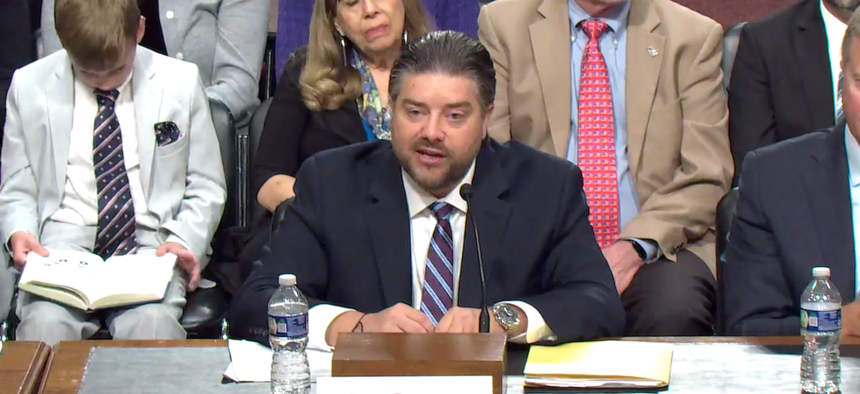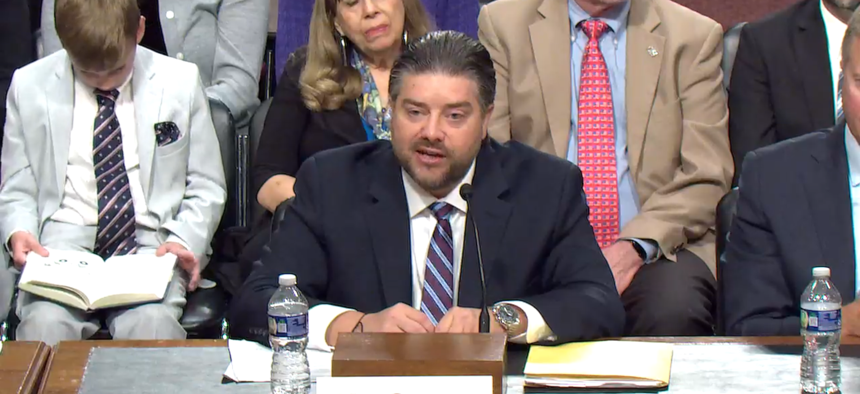
The White House’s pick to field new technologies across the military faster says most U.S. companies want to sell to the Pentagon, but they don’t understand what the military needs.
“One of the things I’ve observed over the last few years is that the vast majority of American [tech] companies want to serve our nation, they want to develop and deliver capabilities to our warfighters. Sometimes they don’t always understand, from a threat-informed perspective, what our key operational problems are,” said James Caggy, the nominee for assistant defense secretary for mission capabilities, one of three roles designed to replace the Pentagon’s chief technology officer position.
That misunderstanding can result in a mismatch when a new technology works in a lab or a narrow scenario but can’t be used broadly—a phenomenon called the “Valley of Death.”
Caggy, who is a former technologist for Amazon Web Services and ex-advisor for the Pentagon’s Strategic Capabilities Office, spoke at his Senate confirmation hearing on Tuesday. He said his main goal would be to build industry relationships beyond tech and provide them “a threat-informed picture of what we are currently dealing with out in the operating environment and what we may be dealing with in the next few years.”
Caggy will be the first to serve in this role. In 2023, the Pentagon divvied up its chief technology officer responsibilities to three assistant defense secretaries: one for science and technology, to lead policy and oversight of research and development; one for critical technologies, such as microelectronics; and one for mission capabilities, which is designed to get new tech out of a lab and onto the battlefield
“We often hinder ourselves with our own bureaucracy, with overly burdensome rules and regulations” that block rapid prototyping and experimentation, Caggy testified.
In responses to policy questions, Caggy elaborated on his priorities for the new office, including working with newer defense tech startups and increasing the “number of joint prototyping and experimentation exercises over the next year, so we identify and fix problems early and get capabilities into warfighters’ hands faster,” he wrote.
“The metric I care about is speed with credibility: how quickly we can prove that a technology works and field it at scale. If confirmed, I’ll work to implement policy how we measure and how we can shorten both timelines, without compromising safety or effectiveness.”
Senators also heard testimony from Joseph Jewell, who is nominated to be assistant defense secretary for science and technology. Jewell is an aeronautics professor at Purdue University, specializing in hypersonics.
When asked about new tech threats, Jewell cited drones that can tunnel underground.
“It’s something that can be wielded against the United States both by peer and near-peer adversaries and potentially by insurgencies and other smaller, even individual threats,” he said, noting that small businesses would be best suited to come up with solutions. “Some of the most interesting ideas on these, kind of, new threats or newly recognized threats come from small businesses. And so, the SBIR and STTS programs, I think, can be critical in terms of getting more new ideas in the pipeline to address those kinds of threats.”
The post Meet the White House pick to conquer the ‘Valley of Death’ appeared first on Defense One.




